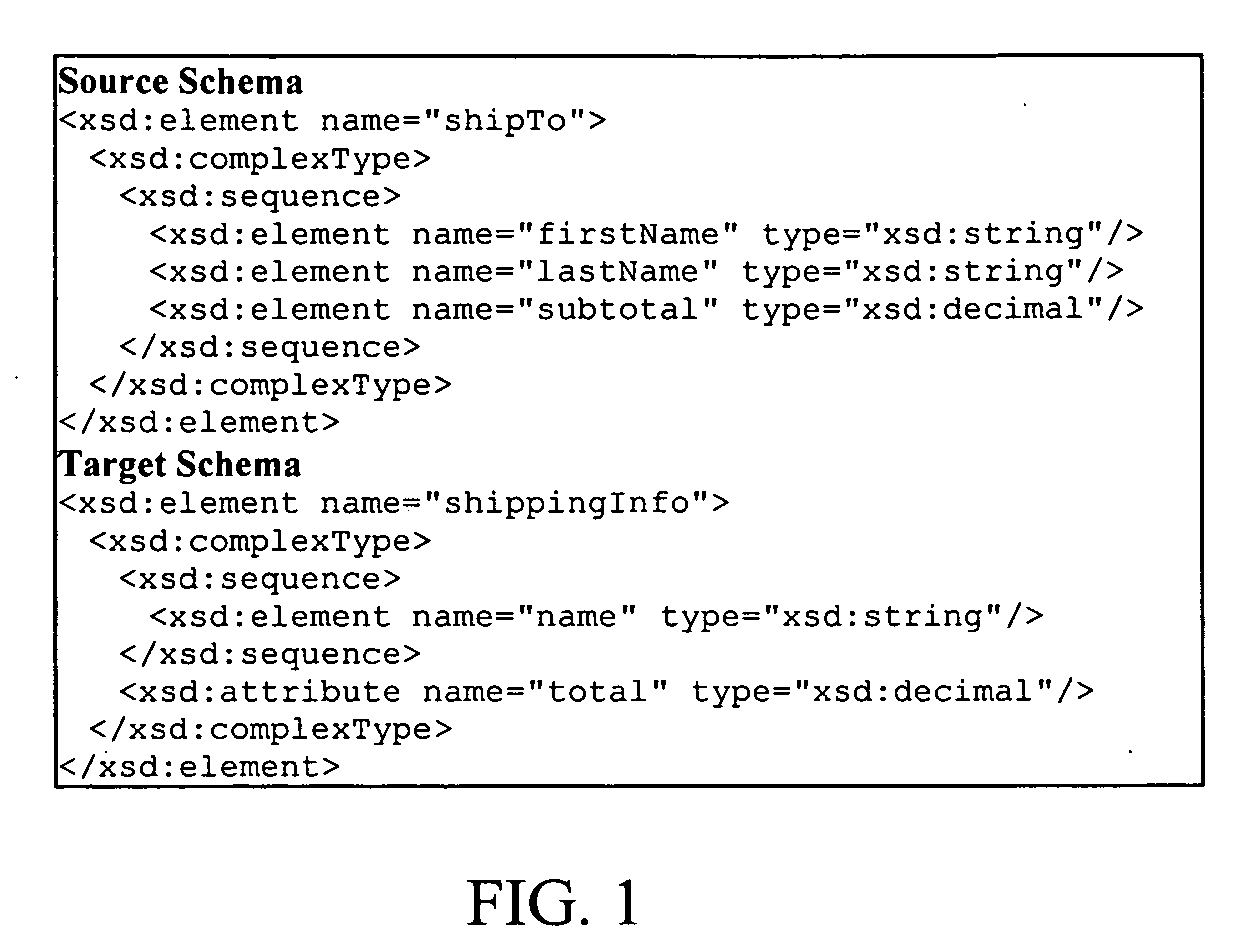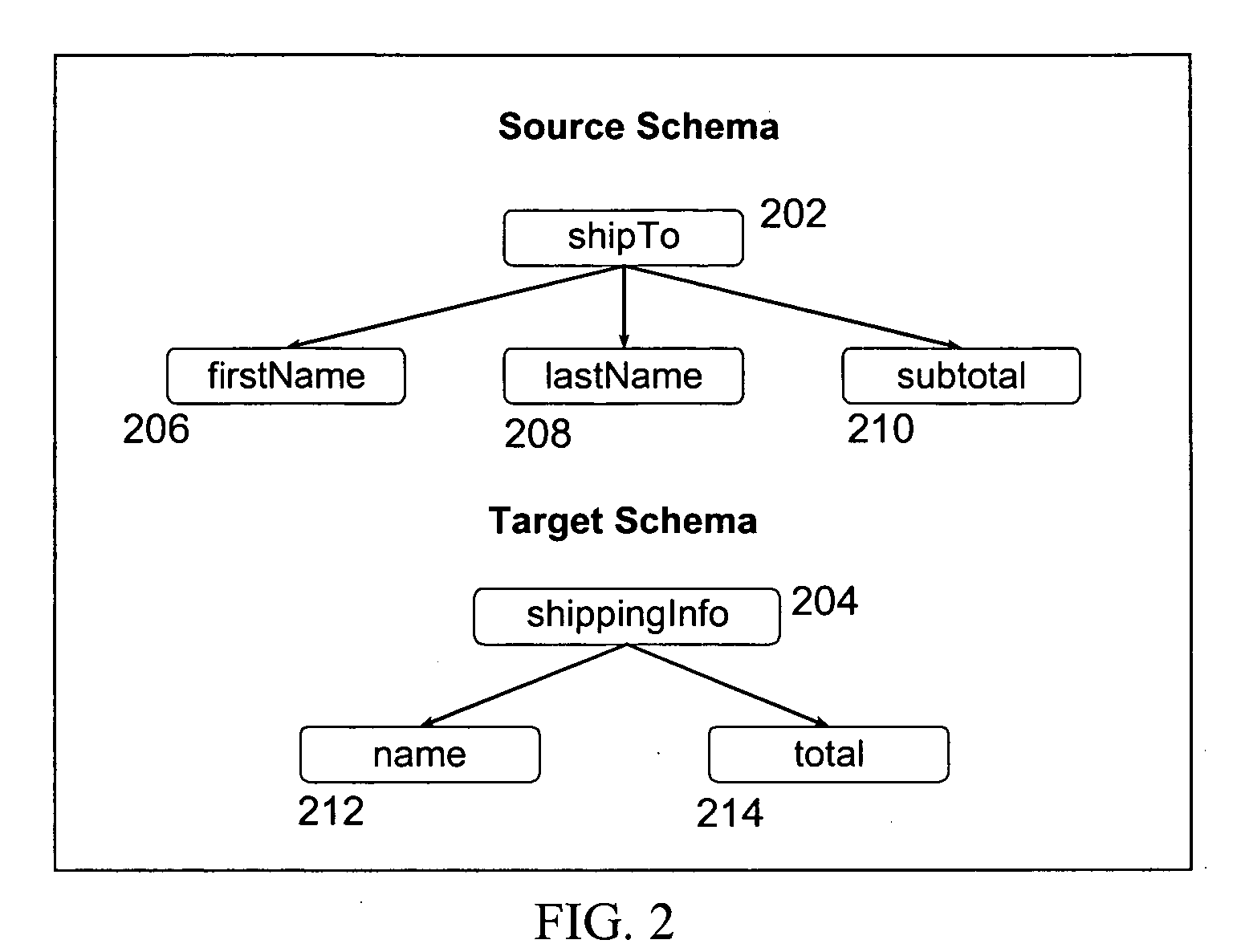Tools and methods for semi-automatic schema matching
a semi-automatic, schema technology, applied in the field of data integration, can solve the problems of not being able to dynamically tune the operational parameters of tools to reflect semantic correspondences, unable to display a filtered set of potential correspondences, and unable to achieve the effect of reducing the amount of information that must be digested by the integration engineer prior to accepting or rejecting matches, and reducing the burden on the integration engineer
- Summary
- Abstract
- Description
- Claims
- Application Information
AI Technical Summary
Benefits of technology
Problems solved by technology
Method used
Image
Examples
example 1
An Exemplary Schema Matching Tool
[0033]FIG. 4 is a diagram of an exemplary schema matching tool 400 that includes components for generating schema graphs, populating match matrices and displaying the schema graphs and the match matrices. For each input schema 402, the schema matching tool 400 includes a component 404 for loading and normalizing the input schema. The loader generates an in-memory representation of the input schema (in its native format), and the normalizer converts that representation into a schema graph. A different loader and normalizer component is required for each schema format to account for differences in schema elements and structural relationships across different formats. Each input schema is designated (by an integration engineer) as either a source or a target schema.
[0034]A graphical user interface (GUI) 406 displays the schema graphs hierarchically. The GUI first identifies a root for each normalized schema graph. Children of the root represent the sche...
example 2
Method for Semi-Automatic Schema Matching
[0079]FIG. 5 is a detailed illustration of an exemplary method 500 that generates schema graphs, populates match matrices and displays schema graphs and match matrices. Input schemata, comprising at least one potential source schema and at least one potential target schema, are provided by step 502 of the exemplary method 500. The input schemata then pass to step 504, which processes the input schemata through a loader and a normalizer. The loader of step 504 generates an in-memory representation of each input schema (in its native format), and the normalizer then converts the representation into a corresponding schema graph. A different loader and normalizer are required within step 504 for each schema format to account for differences in schema elements and structural relationships across different formats. Once the schemata are loaded and normalized within step 504, the integration engineer designates the schemata as either source schemata...
PUM
 Login to View More
Login to View More Abstract
Description
Claims
Application Information
 Login to View More
Login to View More - R&D
- Intellectual Property
- Life Sciences
- Materials
- Tech Scout
- Unparalleled Data Quality
- Higher Quality Content
- 60% Fewer Hallucinations
Browse by: Latest US Patents, China's latest patents, Technical Efficacy Thesaurus, Application Domain, Technology Topic, Popular Technical Reports.
© 2025 PatSnap. All rights reserved.Legal|Privacy policy|Modern Slavery Act Transparency Statement|Sitemap|About US| Contact US: help@patsnap.com



